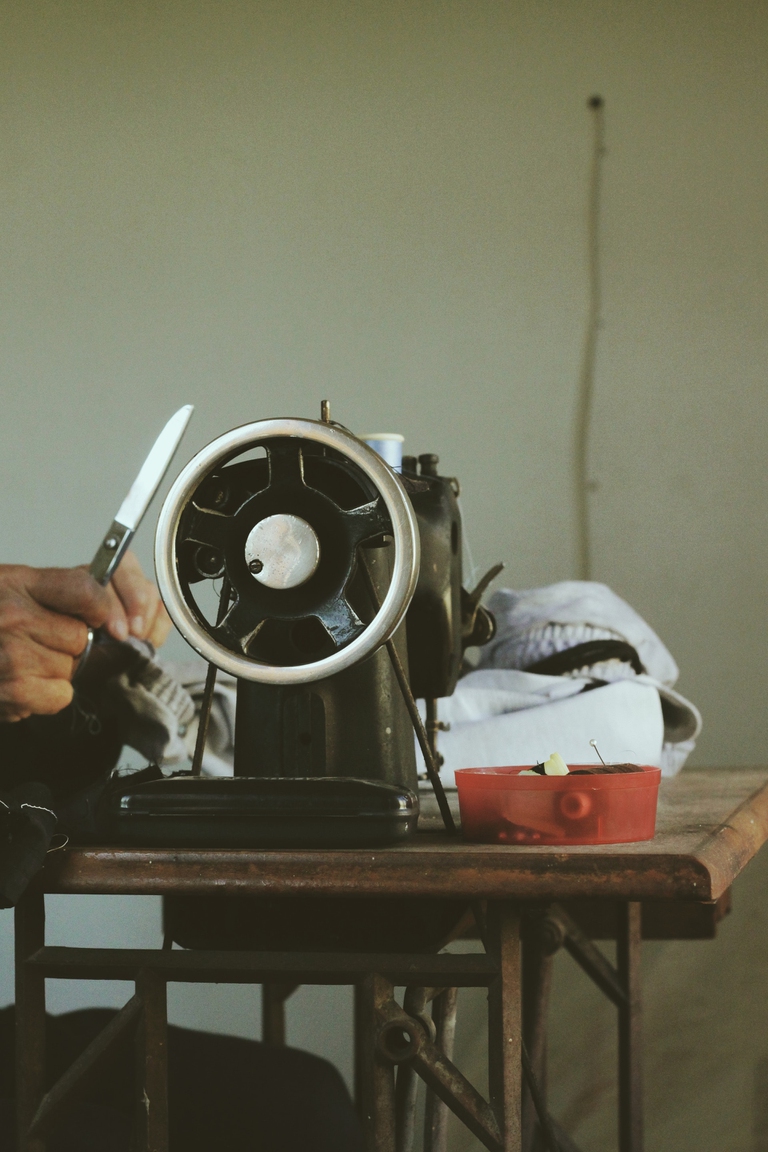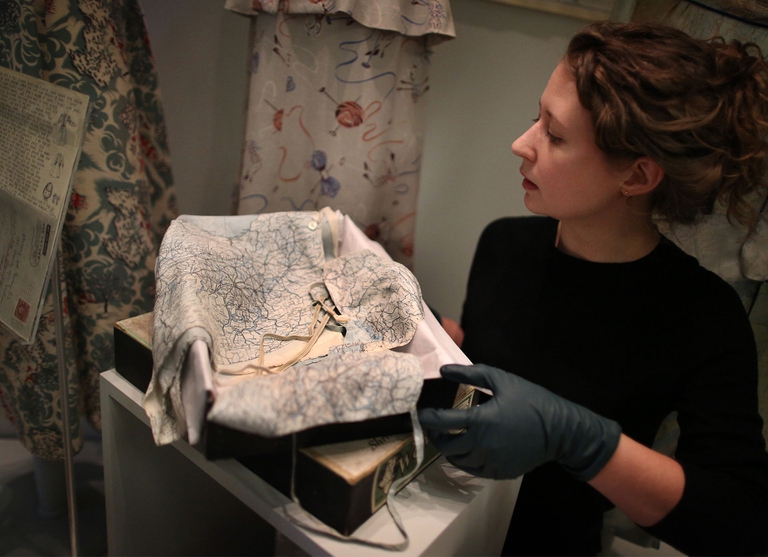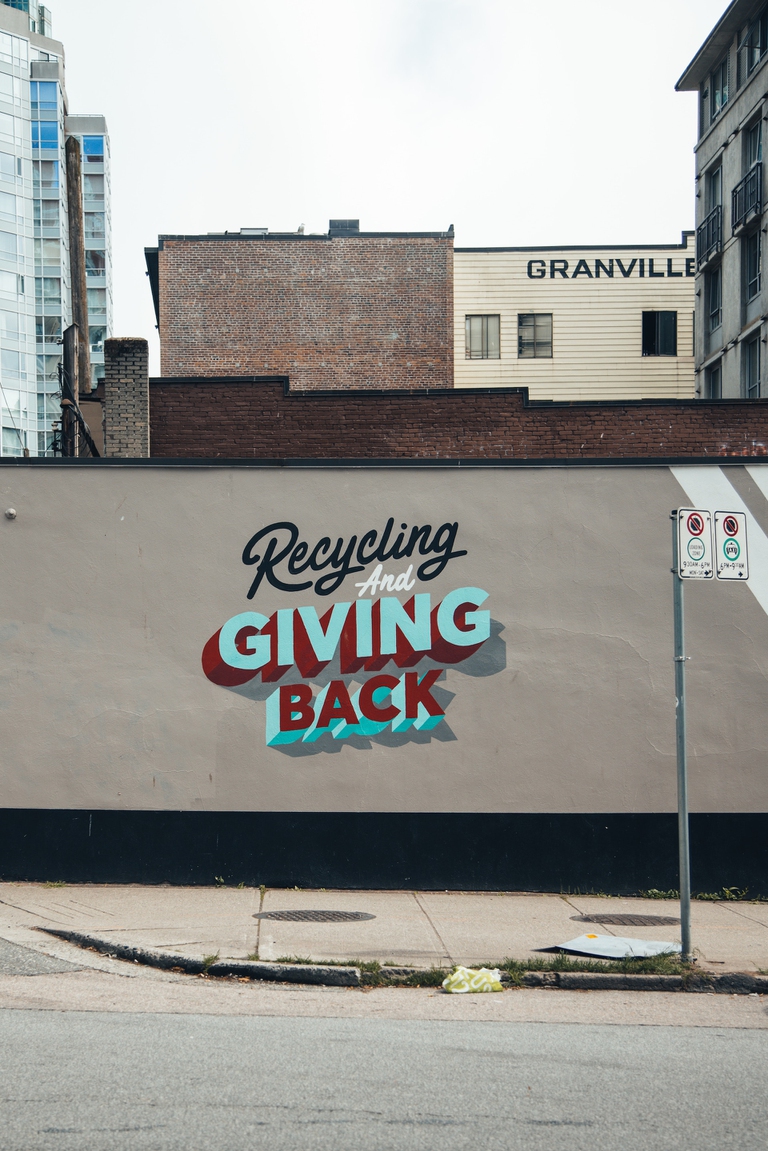https://www.lifegate.it/moda-circolare-definizione
- |
- When we talk about circular fashion we are talking about a closed system, in which resources are not disposed of once their use has ended, but are put back into circulation.
- We talk about circularity in fashion when the life of clothes is extended by repairing, reselling or reworking them through upcycling processes.
- Recycling the fibers that make up clothes is also a good practice from a circular perspective but, for it to be truly efficient, this possibility must be contemplated during the product design phase.
The concept of circular fashion may not be easy to grasp, but let's start with a visual reference: a circle as opposed to a straight line.Circularity is a system that operates in a closed loop, as opposed to a one-way, or linear, system.In the latter, the one we are most used to, we take the earth's resources, we transform them into products, we use them and then we throw them away.This type of approach treats resources as infinite, once these are decommissioned or discarded, their value is lost.The circular economy, and fashion is no different, requires that, instead of throwing something away when we have finished using it, we reintroduce it into the system, either whole or in such a way that the materials that compose it are reused in some way.Such a system is regenerative And restorative:applying the principles of circular systems in all industrial sectors could not only pollute less, but also produce value.But what does all this mean for the fashion industry?

The advantages of circular fashion
With over 100 billion items of clothing produced every year and consumption expected to increase by 63 percent by 2030, maintaining the current growth rate of the fashion world would lead to tripling the current consumption of the planet's already overused resources:just remember that theOvershoot day, or the day on which we ran out of resources for the current year, for Italy was May 15th and for the world the August 2, 2023.Returning to fashion, only the 13 percent of textile products is recycled once the clothing is discarded.Most of these are placed on the second-hand market, but only less than one percent is recycled into new clothing, the rest is transformed into textile waste, which represents a loss of more 100 billion dollars of materials each year.
To date there are essentially two ways of addressing circularity:on the one hand maintain clothes and textile products in use for as long as possible, on the other recycling clothes to obtain new fibres.The first option includes activities that aim to extend the life of the products as they are, therefore sale or repairs, or those that, starting from already existing products, create something that wasn't there before, that is,upcycling.In the second we must instead include all those processes that are capable of obtaining new fibers from pre-existing ones through recycling processes.
Regenerate, reuse, repair and resell
To ensure that a process is truly circular and thus reduce its environmental impact, it is important that the garments pass from hand to hand without there being further waste of resources, or that this is minimal, such as that linked to resell shipments.Repairing garments is certainly one of the greenest methods imaginable for extending the life of products, but it is not always that simple.Obviously there is maintenance of clothes that we can all adopt, taking care of them when washing them at home and working on the products when they are worn and broken, but often the necessary repairs are beyond what we are able to do on our own.It is in this context that the initiatives of numerous brands related to repair, especially in the outdoor sector, a world in which the performance of products is directly linked to their state of health and a sector in which brands have already worked hard in past eras. The North Face has had a department specifically dedicated to repairs since 1971 and recently launched the TNF Renewed program, an initiative that consists of refurbishing the clothes of consumers who get a discount by bringing back what they no longer use. Patagonia took repairs around the world with the Worn Wear Tour, going to mountain resorts and offering repairs for outdoor garments while since last November the Californian brand has inaugurated some repair station fixed in their stores.

One of the reflections of the consumerist society in which we are immersed is that we inevitably end up... buy more than we need:it happens with everything and it also happens with clothes which often end up being worn very little.The importance of a practice such as that of the resell, or the resale of items that are no longer worn.A practice that today is exponentially easier than in the past and, above all, much more widespread throughout the territory thanks to the diffusion of second hand apps.By 2026 the turnover of second hand is destined to reach 82 billion dollars, enjoying growth of 275 percent compared to pre-pandemic volumes.This dizzying increase is partly justified by technology, which has made it easier to sell and buy second-hand clothes and accessories, but also by a change in consumer perspective who, driven partly by economic factors and partly by with an ever-increasing awareness of environmental issues, they buy and above all sell through online marketplaces.
Another way of putting used clothes and accessories back into circulation, giving it a new life, is to transform them, perhaps assembling some parts with others coming from other clothes or accessories for example. Upcycling, this process is called which sees, through creativity, the creation of value starting from something that would otherwise be perceived as waste.Obtaining a jacket by cutting some scraps of fabric from a pair of trousers or another jacket is an example of what can be defined as an upcycling process.The new product can be similar to the original one, as in the case of a pair of jeans made from other jeans, or it can undergo a functional transformation and become something that has nothing to do with what it originally was.It is to all intents and purposes a matter of reuse, but experienced in a decidedly more creative way.

Recycling of textile fibres
The challenges the industry must face to achieve true fiber-to-fibre recycling are numerous:firstly because recycling is an energy-intensive process in itself and, today, one of the enormous problems that the textile sector finds itself facing in this area is the composition of clothes, in fact not all of them are recyclable.The more a garment is made up of different fibres, the more complex the process by which they can be recycled.The ideal, from a circular economy perspective, would be to have single-material products.To date, research into recycling has made progress, of course, but large-scale investments and infrastructure are needed to bring them up to speed, including fiber selection capabilities. Osomtex, for example, is a brand based in Oregon that recycle mechanically post-consumer and post-industrial textile waste into new yarns through a technology capable of recycling single fibres, such as cotton, or multiple fibres, which are shredded and mixed with virgin fibers to create new yarns. Evrnu it is instead a company that, thanks to the ucycl® patent, converts waste textile materials into "new" engineered fibres, which can be recycled several times thanks to a chemical process.
Beyond materials, circular economy perspectives
Circularity can and must be applied to raw materials, certainly, but it is also an opportunity from the point of view of the processes themselves, which can generate additional energy, and therefore value, or waste products that cannot be used by the textile industry but which are perhaps attractive for another sector.By optimizing the use of resources, for example, it is possible to capture the steam resulting from certain processes and produce energy for a new process, not only:even waste water or certain chemicals can be reused.As for the waste products of the textile industry is possible obtain economic value and avoid waste and waste by identifying other sectors that could benefit from it.For example, that's what he does Reda 1865, a company producing wool yarns in the Biella area which collects and sends lanolin, the protective fat found on the fleece and which is a waste product in the raw wool washing processes, to the pharmaceutical industry.

Circularity in textiles is not a utopia, but it is important that this is integrated starting from design process: thinking about clothes and collections from a circular perspective both in terms of materials and use is the starting point also for adapting to European requests.There European strategy for sustainable and circular textiles in fact, it asks for precisely this, that the sector asks itself in advance the problem of what will happen to it end-of-life products.The implementation of what this programmatic document for sustainable fashion calls for, between now and 2030, will require collaboration between industry and government, significant investments, large-scale innovation, transparency and traceability.
